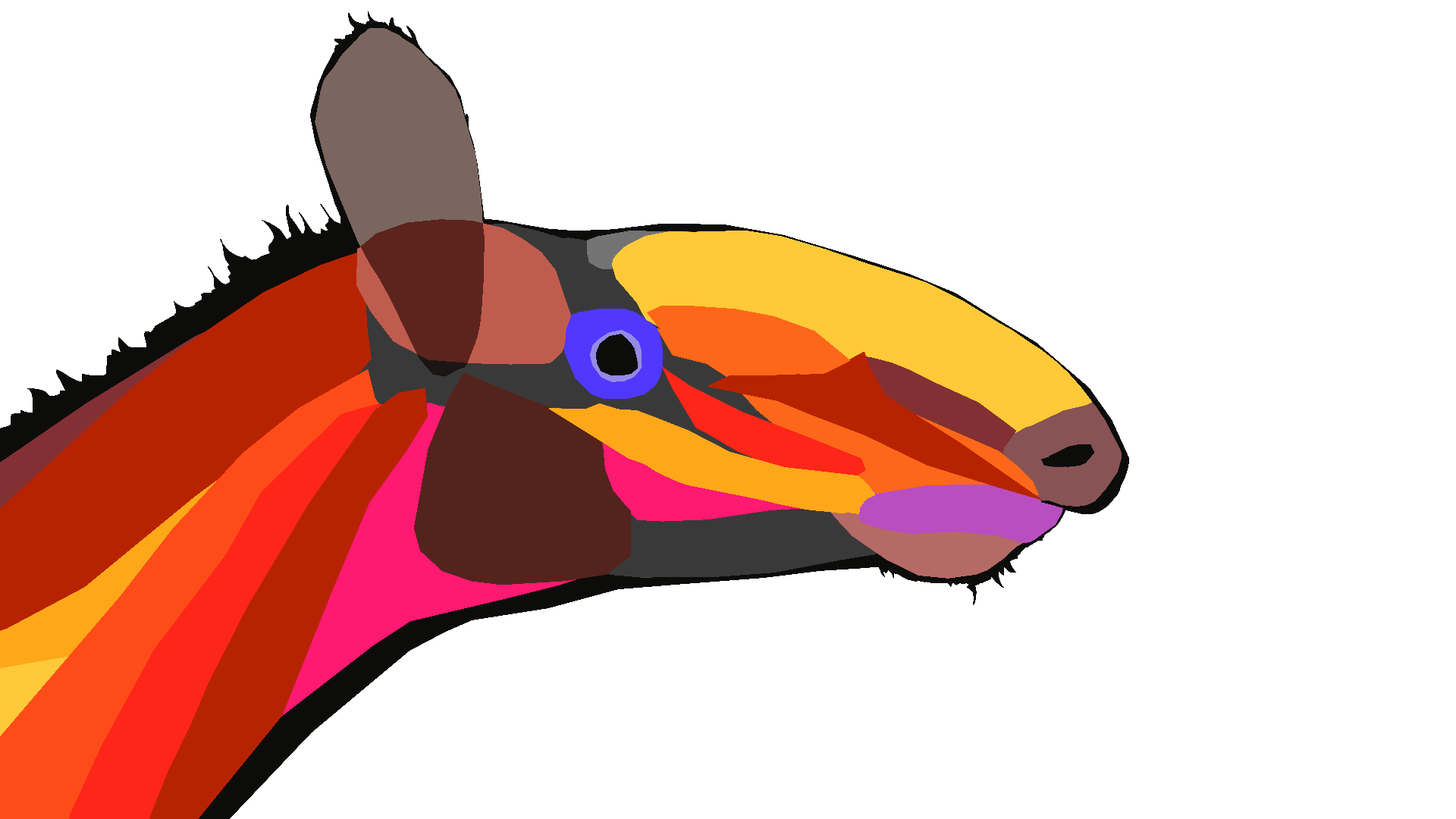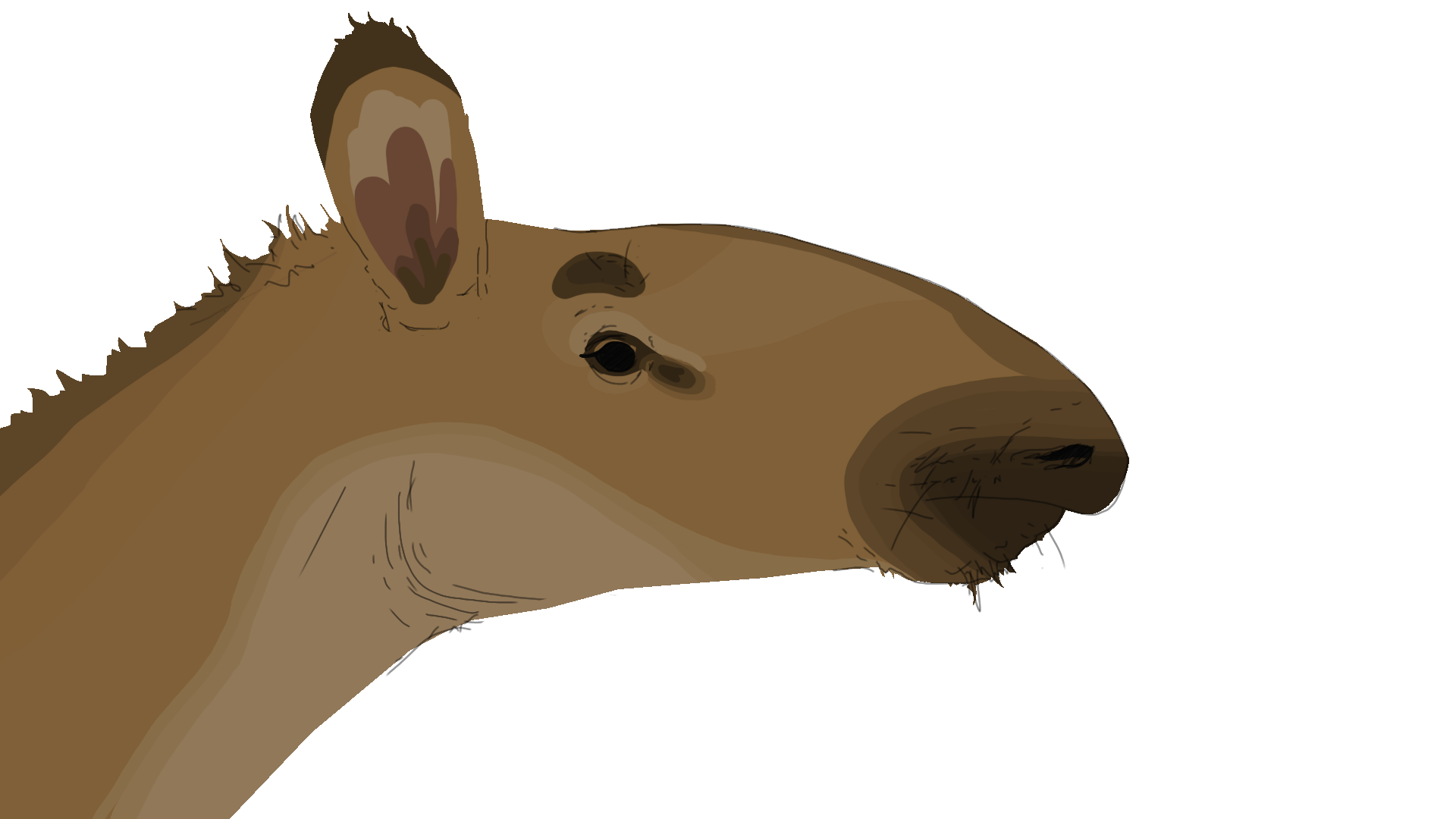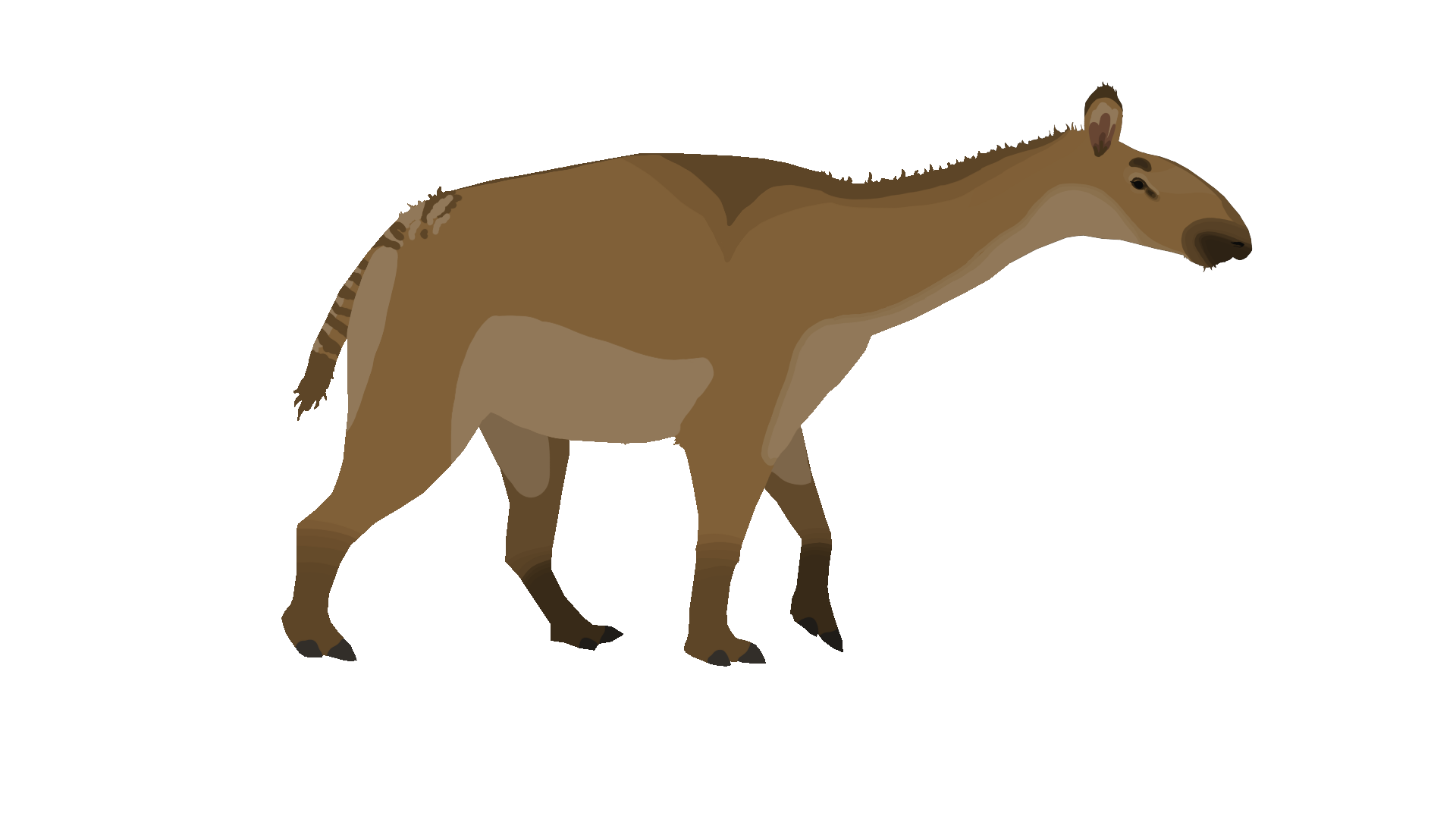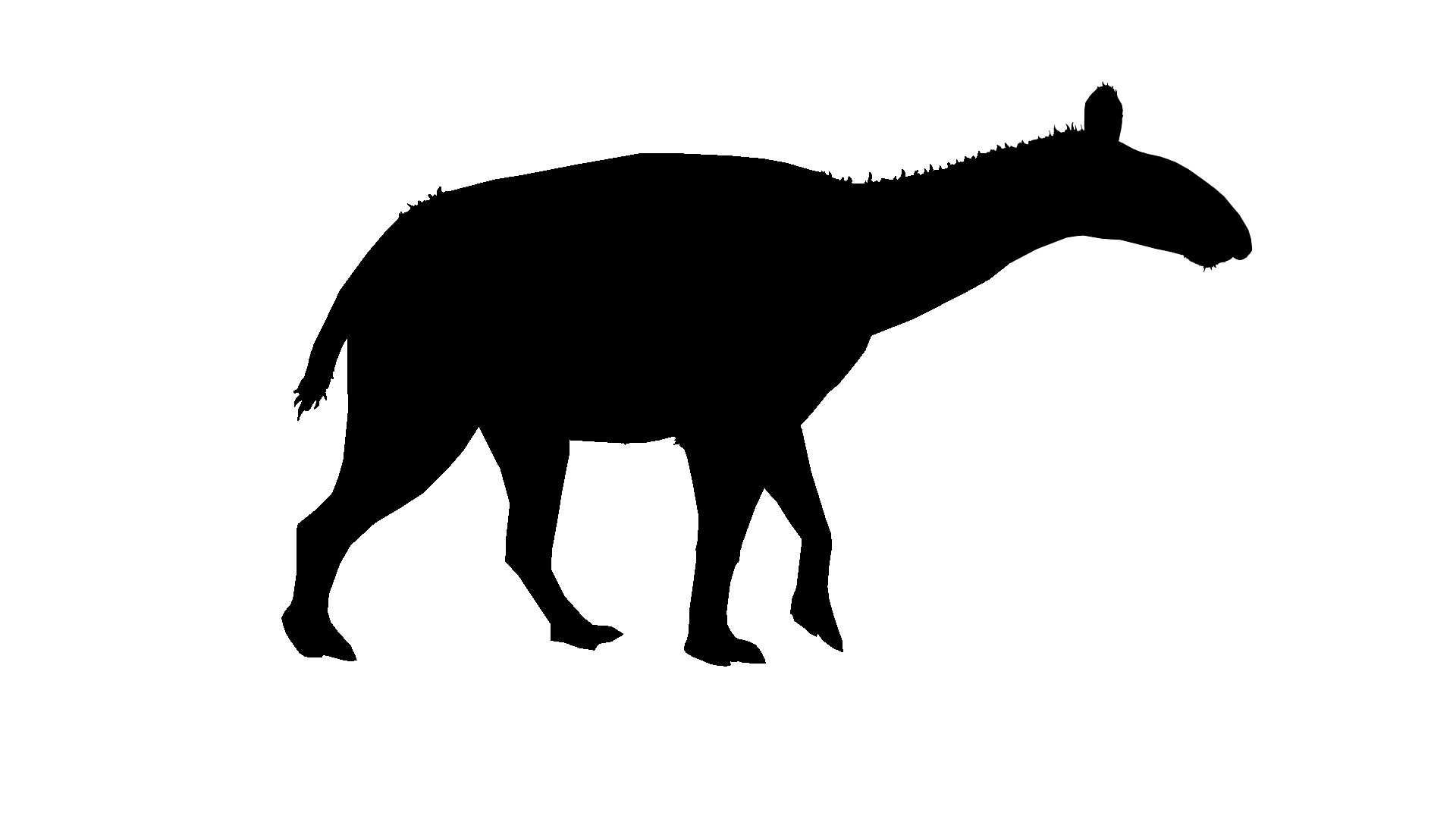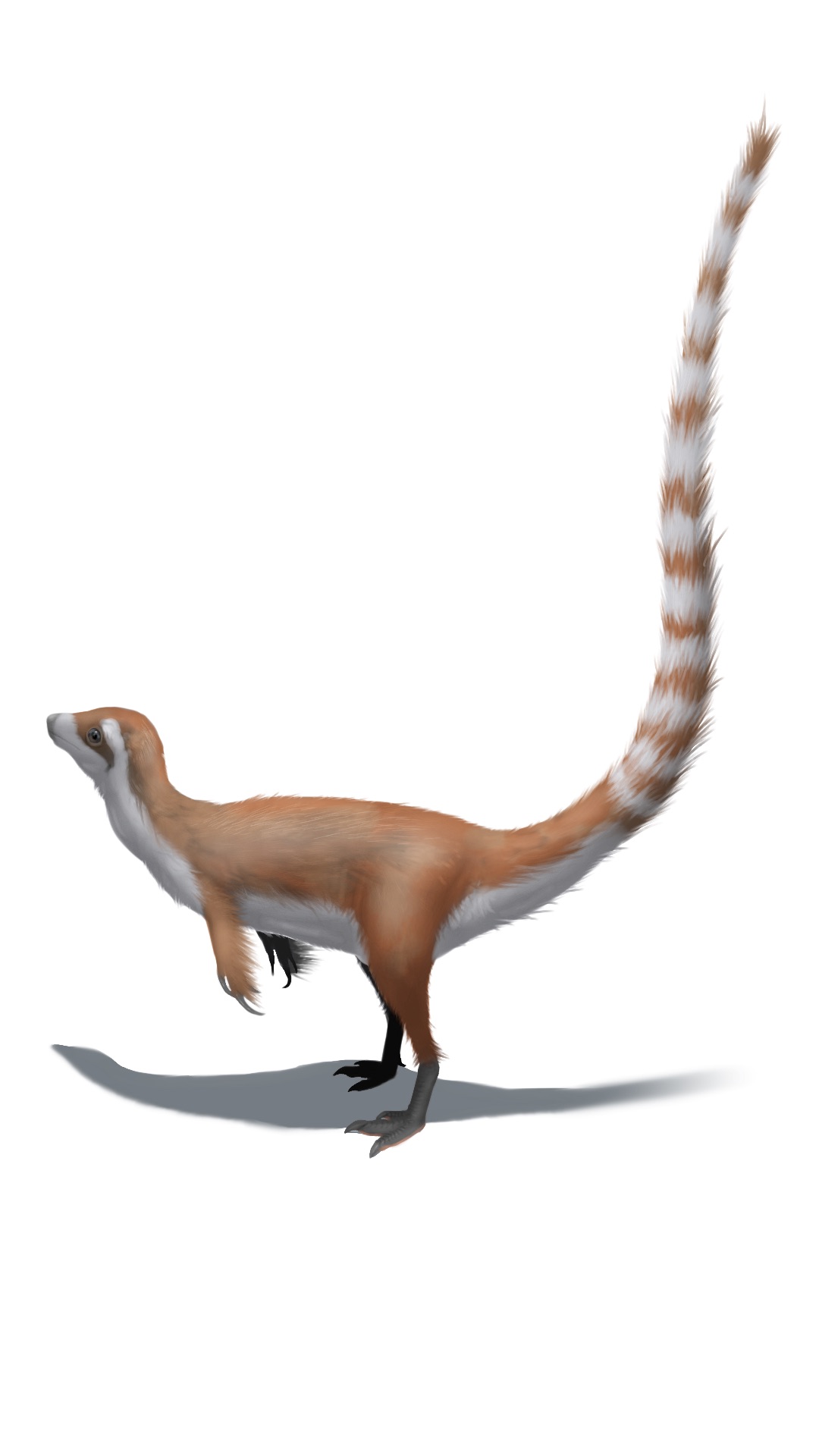
So since my last post, the introduction to this blogspot, a lot has clearly happened in paleontology. If it isn’t with Ornithoscelida (Baron, et al. 2017) and the recent addition to the mess that is Dinosaurian phylogenetics (Langer, et al. 2017) then it is the mass of new Titanosaurs that have recently been added in (bye bye, Moabosaurus, which is now way down in the tree) and Troodontids… oh wait, I guess Stenonychosaurs?.. Goodbye Troodon (and welcome to the outdated club, trial of this blog, let’s hope that some unpublished Canadian specimens clear this neotype nonsense up). Or the new Plesiosaurs, new birds, new Cenozoic Big-Bird phylogenetic reanalysis, big toothed Rhabdodonts, giant Azhdarchids, tiny Anurognathids, laser studies on Anchiornis, or stilt legged Microraptorines, small Alverezsaurids etc. But none of these are the paper to be discussed here. The recent Smithwick, et al. 2017 paper on the coloration and inferred lifestyle of the small Compsognathid, Sinosauropteryx prima is what caught my (along with many others) attention. Being the first non-avialan dinosaur found to have feathers preserved, along with evidence of coloration, it is quite the special little animal. One would be able to hypothesize what the unknown bits of the animal would look like based off of many similarly sized mammals, along with birds with similar colors and bodily proportions. And this paper has clarified so much, further proving this. However, despite the new evidence, the paper made me raise my eyebrows more than a few times. Particularly and mainly on the conclusion of the inferred lifestyle. Here I breakdown the questionable parts and give my thoughts and reasonings, building up to the main issue. (Also, I am working on those other two that I promised)
Too Small for Defense
“Alternatively, conspicuous face markings could serve as a warning of a physical deterrent, such as a weapon or armor. Although the theropod had an enlarged claw on each hand, the animal’s small size makes it unlikely that it posed any real threat to its likely much larger theropod predators, making this function of the bandit mask unlikely.”
The authors of the paper make the statement that Sinosauropteryx was too small to be much of a threat to larger predators of the Jianshangou Bed. This likely wouldn’t stand in life, as size tends not be a factor in how threatening an animal can be. There are a multitude of different small mammals, birds, reptiles, amphibians, insects and non-insect invertebrates that actively threaten much larger pursuers and manage to scare them off. Whether it be sound, erratic movement, aposematism (bright colors), posing, or puffing up, or even all of the above, these organisms manage to fool predators into thinking they are more threatening than actually they are. Animals such as Honey Badgers often hold off predators such as Lions, simply by being highly aggressive, having bright colors and snarling.
Sinosauropteryx lived in an environment in which the largest confirmed predators would have been animals such as Dilong, which would be around 2 meters long and weighing in around 5-9 kilograms, or 12-20 pounds (note, this is a very rough estimate, based off of the size of the animal, nature of the bones and slenderness of said animal. This also counts on there being no other larger predator, but as a safe guard, we’ll add in a hypothetical 1 ton theropod). Sinosauropteryx could range anywhere from .5 to 1 kilo (2-4 pounds). This would make Sinosauropteryx around 1/6th to 1/10th the mass of Dilong. In comparison, the Coati, Nasua sp., is .5/6th the mass of its largest predator, the Jaguar, Panthera onca. Yet, despite being so small compared to Jaguars, Coatis are known to be quite aggressive towards aggressors, utilizing their large banded (sometimes almost shrouded in dark fur) tails as a threat signal, thrashing it, while hissing, bearing their teeth and swiping (an example here: https://youtu.be/FLpAwhTxWT4). And Dilong and Sinosauropteryx are roughly the same size (height and length wise) to Jaguars and Coatis, respectively. There is no reason that Sinosauropteryx couldn’t defend itself. And given that it has feathers, and feathers being filaments, it should be able to raise its feathers, just like any other tetrapod with filaments (hair, fur, feathers, etc). Its brightly colored, striated tail could be flaunted about, like many modern mammals (though not to the same extant, in regards to maneuverability in saurian tails), which typically do have striped tails. Looking at modern relatives, brightly colored mouths, which are featured throughout reptiles and birds, are often used to shock or surprise predators. Also used are sounds, typically hissing ,and if not, then thrilling, cooing, screeching, etc. And if not of these work, Sinosauropteryx could always resort to either running away, or better yet, using the massive claw on its first digit, along with the many sharp teeth in its mouth.

Put That Tail Down, Mister
“Alternatively, the banding could have served as a form of disruptive camouflage, as is seen in a number of modern animals, breaking up the outline of the tail to make it less recognizable to potential predators. A combined function of camouflage and instraspecific signaling has also been suggested in some extant bird taxa with banded patterns. However, we find no osteological evidence for an ability to lift or pose the tail, which would have limited its utility in display.”
The idea that a predator would be thrown off by banding solely on the tail is odd on its own. It’s simply the tail. Surely, Dilong and the other animals of the region would still see the bright orange, red, brown and white animal standing, or hissing at its feet or in its line of sight. Still recognizable and not much a tail can do. Animals such as ringtails might be able to get away with this issue due to their muted colors which resemble their environment.
As for the usage in intraspecific behavior, that is probably a given. Coatis, Lemurs, Raccoons, most other Procyonids, a few birds (for instance Waxwings and Grass Finches) are some of the examples of animals that have brightly colored or varied tails. All of these examples use their tails for display and communication. And, all of these examples are social animals (if not to an extant in some species) that use their tails in said communicative and vibrant manners. Of which, the animals with similar lifestyles and bodily proportions, Coatis and Lemurs (Ringtail) all hold their tails up, as it is not only the best way to get a signal across, but it is also rather efficient when carrying such a long tail. The authors of the paper mention that Sinosauropteryx would probably not hold its tail out properly horizontal due to said length. This was also mention at this year’s SVP, at Smithwick, Nicholls, Cuthill and Vinther’s (the authors of this paper) talk. Even the paper alludes to this a little bit earlier, but they end up doubling down on it by mentioning how there isn’t any osteological correlate that would imply that Sinosauropteryx held its tail up fully up. There doesn’t necessarily have to be.
Compared to each other, a raccoon and coati skeleton would look rather similar, other than a few facial, limb and clearly tail length differences. Other than that, there isn’t too much separating them. That includes the morphology of the tail. The vertebrae on a Coati’s might be marginally larger, possibly to manage to hold up said tail, but other than that there is nothing indicating that the animal would be holding its tail up often. Same applies to Sinosauropteryx, correlates or no correlates.
And Finally…
“The diminutive size of Sinosauropteryx and its relatively high countershading transition adapted for open areas indicates that it lived in habitats with either few plants or very low vegetation cover.”
This is the main point of this post. This statement right here. I have disagreements or rather a few doubts with the notion that Countershading could be used as a form of camouflage in terrestrial animals. But my reasonings for that will come right after. For now, we’ll say that countershading is properly applicable.
A small animal like Sinosauropteryx would not benefit from being countershaded in an environment in which the vast majority of predators are miles above eye level with the animal. An animal like Caudipteryx or Dilong would probably barely notice or even see the line at which there is a sharp transition from dark to light. At its tallest, a Dilong would be around a meter tall. When looking at an animal as small as Sinosauropteryx, the eyes would likely be overlooking any countershading, rather, the back would be visible. This also brings up the issue that Sinosauropteryx was brightly colored, an orange/brown/red color (Zhang, 2010). Countershading typically takes place alongside the fact that the main colors of the animals match the environment. Countershaded or not, Sinosauropteryx would stick out like a sore thumb, and the striped tail would not help at all.

Regardless of color, another thing to bring up: small, terrestrial animals tend to avoid open, exposed environments. Especially in the wake of much larger predators. The forest floors of the Yixian had plenty of cover, from Bennettites (Baikalophyllum, Rehezamites, Tyrmia, Williamsonia, etc) (Wu, 1999) to ferns such as Eboracia lobifolia, or fallen Ginkgoites lepidus (Jiang, 2008) and Pityocladus sp., all littering the ground. And these are only a sample of the plant life found in the forests. Thick brush such as this is often inhabited by small, flashy animals, as to conceal themselves from predators. Such animals include birds such as Pheasants, Grouse, Raccoons, Coatis and Lemurs (as well as many others). The open regions of the Beds would have had plants such as Ephedra, a desert gymnosperm that is still often found in arid to semi-arid environments. Despite being a rather large “bush”, it could do very little to protect the highly contrasting Sinosauropteryx. Ringtails, in the US, live in similar environments and have similar body colorations to that of Sinosauropteryx, yet the main difference is that Ringtails are the same color as the dirt, rocks and dead trees they love to hang around.
One of the pieces of evidence that the authors presented for Sinosauropteryx being an open terrain hunter was the gut contents. Particularly, Dalinghosaurus. It’s described as having very long legs and shirt arms with a very long tail. This brings it up as possibly being an animal adapted for open ground running. But, many Iguanians would like to disagree. In particular, animals such as Basilisk Lizards, which have somewhat similar proportions to Dalinghosaurus. Basilisks live in dense forests , always sticking by river banks in case they need to bolt across the waterfront or across the water itself (if not swim away). Having long rear limbs isn’t indicative of preferring a lifestyle away from trees (as Frilled Lizards would also, kindly, like to show).
Now. The issue with countershading, otherwise known as Thayer’s Law. It originated from illustrator Abbott Henderson Thayer and the idea was proposed in his book “Concealing-Coloration in the Animal Kingdom”, published in 1909. The idea of countershading as a form was a first at the time. However. The book had many, many glaring issues in its proposals. For one, Thayer did not accept Darwin’s idea of sexual selection, rather believed that all coloration in animals evolved as a form of camouflage. Thayer was known to have an obsession with this subject and was remarked by scientists in the field, such as Hugh Scott, as being enthusiastic about the subject. But, Scott himself, an expert in the subject regretted said enthusiasm, due to the outrageousness of the ideas. Thayer would find countershading in animals where there was none and did not use evidence, but rather his own eyes. Caterpillars were a great example. If not countershading, then it was the camouflage of Spoonbills meant to keep them hidden against a pink sky with clouds, or how the eye spots of a Peacock’s veil keeps it hidden amongst the leaf litter. Zoologists and other scientists ridiculed Thayer for ideas like such. But these other examples also bring up a reason as to why countershading as camouflage in large animals might be improbable. Timing.
Countershading, for instance, in a Gazelle might (hypothetically) work during noon/midday, when the sun is directly above and creates the strong contrasting shadows from the midline/down, but as time passes on, the shadows shift and render the countershading useless. Not to mention that most open landscape predators prefer to avoid much activity during noon, when it is hottest, and prefer hunting at dawn, morning, afternoon and dusk, if not entirely at night. This doesn’t end bring up the fact that it’s somewhat difficult for a predator with acute senses of smell, hearing and vision to miss a large antelope that it’s probably had its eye on for some time. But that’s enough with that tiny tangent.
Conclusion/Proposal for Lifestyle
Sinosauropteryx likely wasn’t going around being a tiny open landscape, lizard hunter. Based off of modern animals with similar coloration, dentition, size and environments, it was probably (to no one’s surprise) living similarly to Small ground dwelling birds and mammals (like Procyonids and a few Pheasants). This would include digging up food on the forest floor, chasing down lizards, eating vulnerable amphibians, eggs, invertebrates, possibly fruit and other plant matter, living in small groups, using some heads as lookouts while the others forage, signaling with their tails in order to communicate the presence of danger, or other social matters. It’s not hard to imagine them hunkering down under some large rocks, or fallen trees as well, if not scurrying up half fallen trees, or climbing up trees, utilizing their claws. Hard to imagine, but not impossible, given that modern birds such as Turkeys, or reptiles such as Alligators and monitor lizards show little adaptation for living in trees, yet are often found in them, typically resting, our for shelter. Presented with danger, Sinosauropteryx could easily run off and hide under the foliage, rocks dirt, in hollow tree trunks, or abandoned mammal burrows (if not their own, imagine that). If they can’t run, utilize their threatening masks, puff themselves up, hiss and swipe at aggressors., hopefully until they decide to find better meals. If that doesn’t work, their lovely claws and teeth could make nice work of a predator.
References
- Forbes, 2004, thayer
- Jiang, Hongen & Ferguson, David & Li, Cheng-Sen & Cheng, Ye-Ming. (2008). “Fossil coniferous wood from the Middle Jurassic of Liaoning Province, China”. Review of Palaeobotany and Palynology - REV PALAEOBOT PALYNOL.
- Li, H. 2005. "Early Cretaceous sarraceniacean-like pitcher plants from China." (PDF). Acta Botanica Gallica
- Smithwick, F.; Nicholls, R.; Cuthill, I.; Vinther, J. (2017). “Countershading and Stripes in the Theropod Dinosaur SinosauropteryxReveal Heterogeneous Habitats in the Early Cretaceous Jehol Biota”. Currently Biology.
- Wu, S. (1999). “A Preliminary Study of the Jehol Flora from Western Liaoning”. Paleoworld.
- Xu, X; Norell, M; Kuang, X; Wang,X; Zhao, Q & Jia, C. (2004). "Basal tyrannosauroids from China and evidence for protofeathers in tyrannosauroids" (PDF). Nature.
- https://m.youtube.com/watch?v=3QiQ7rvkyiA
- https://youtu.be/FLpAwhTxWT4)
- Zhang, F.; Kearns, S.L.; Orr, P.J.; Benton, M.J.; Zhou, Z.; Johnson, D.; Xu, X.; Wang, X. (2010). “Fossilized melanosomes and the colour of Cretaceous dinosaurs and birds”. Nature.

